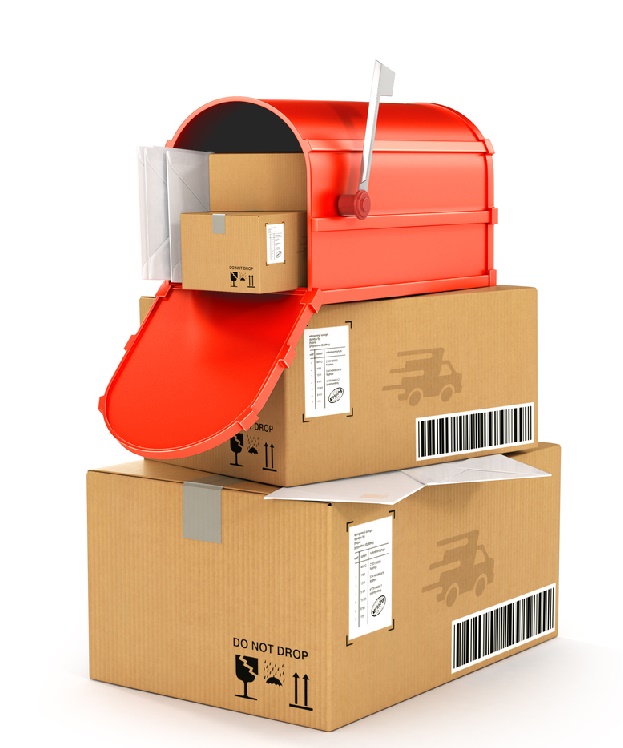In the ancient days, before e-commerce, when you wanted to return something, you had to go back to the store where you bought it (if you bought it in a store) or wait in line at the post office, if you bought it via mail order. This also involved locating the original packaging, getting the item to fit back in the box, and finding tape to seal the box, not to mention the receipt. PCs and the early Internet improved this process somewhat—if you bought from a good retailer, you could print or download a return label and drop off the item at a UPS location or leave it for a UPS delivery person to pick up.
E-commerce changed things. It enabled you to buy 10 shirts and return nine if you wanted to, but it did little to ease the hassle of returning purchased and unwanted items…until recently. In the last couple of years, several startups have emerged to ease the pain shoppers face when returning things, while attempting to reduce the cost to retailers at the same time. And that cost is significant: according to the National Retail Federation, the retail industry saw $260.5 billion in returned merchandise (or 8% of total sales) in 2015 alone, and online return rates can reach as high as 30%–40% in the apparel and accessories categories. In the last couple of months, however, two large retailers have come up with viable and innovative returns solutions. Below, we run down the startups and retailers that are remaking the returns process.
Happy Returns is a technology, logistics and services company that enables shoppers to make in-person returns of merchandise ordered online via return kiosks at shopping malls.
Returnly provides instant refunds to consumers. Most online product returns result in lost sales for the retailer and frustration for the shopper. It takes brands 21 days, on average, to process a refund. Returnly manages a B2B fintech platform that offers shoppers instant refunds as store credit, so they can make another purchase even before a return is processed. The company fronts order refunds and takes the product return and customer risk on behalf of retailers.
SupplyAI uses an applied artificial intelligence (AI) platform to help retailers derive maximum cost efficiencies from their order-to-cash cycle by minimizing returns of online purchases. The company uses AI deep learning to correlate consumers’ individual online shopping trends with their shipping patterns and return history in order to determine how likely they are to return an item. The company helped one large omnichannel retailer identify and prevent an estimated $61.2 million in returns.
Amazon and Kohl’s expanded their initial partnership—which called for Kohl’s to sell Amazon electronic devices such as Echo intelligent assistants and Fire tablets—to include Kohl’s accepting Amazon.com returns at some US-based stores. Under the agreement, Kohl’s will pack and ship eligible items and send them back to an Amazon fulfillment center free of charge for the customer. The service was initially available at 82 Kohl’s stores in Los Angeles and Chicago. It is likely that Amazon will leverage the 400-plus Whole Foods stores it has subsequently acquired to expand its return capabilities further.
Walmart recently launched its own in-store returns service called Mobile Express Returns. Under this service, customers can return goods purchased online by using the Walmart app on their smartphone to generate a QR code, which can then be scanned in a physical store to return goods rapidly. The service will be launched this November and ultimately rolled out to all 4,700 Walmart stores.
The advent of the Walmart service creates some interesting questions for retailers with e-commerce operations and physical stores. Namely, can consumers return items purchased on an online marketplace at Walmart stores? And what about goods purchased from Walmart-owned Bonobos or Jet.com? Amazon might need to answer those types of questions, too, if it leverages its Whole Foods stores in a similar way.
Fortunately, consumers now rarely have to stand in line at the post office to return those pants that were optimistically purchased in a size too small, and retailers can choose among several new companies whose solutions mitigate the pain and reduce the cost of returns. Although returns are typically offered for free today, they are, of course, not free for retailers—and, ultimately, consumers will likely have to share the cost of returns, especially in cases of egregious overordering.
Other pieces you may find interesting include: Supply.AI: Solving the Problem of Returns, Happy Returns Company Overview, DEEP DIVE: Shoptalk 2017 Workbook Startup Pitch Series: The 15 Startups, Takeaways from Walmart’s 2017 Investment Community Meeting: Moving with Speed
Connect with us on social media:
@DebWeinswig
@FungRetailTech
Facebook
LinkedIn
Subscribe to our YouTube channel
Pinterest
Instagram
